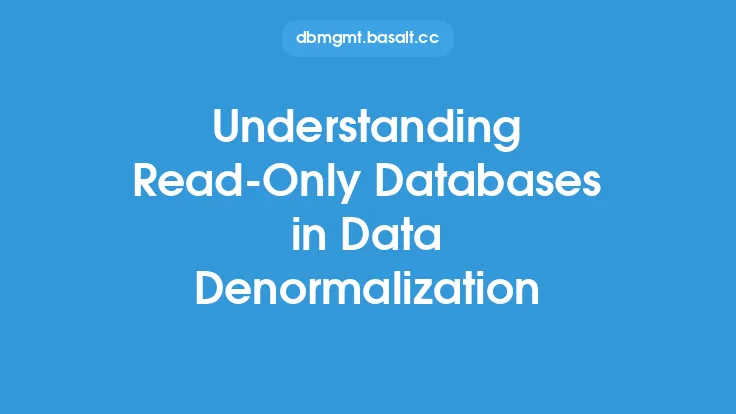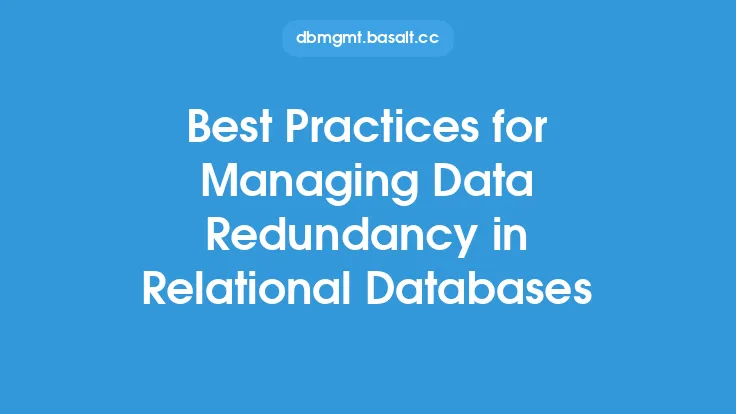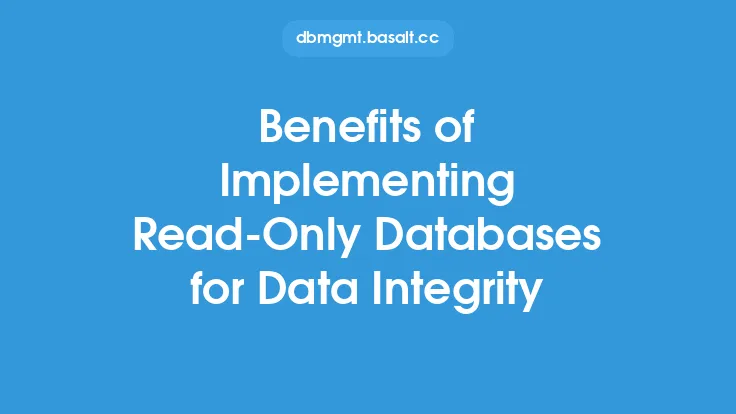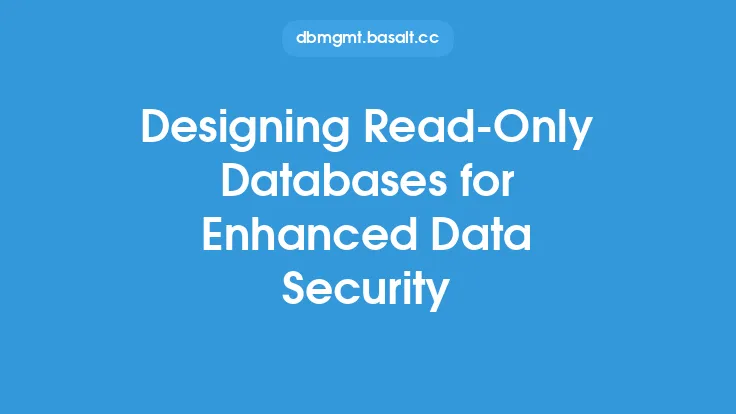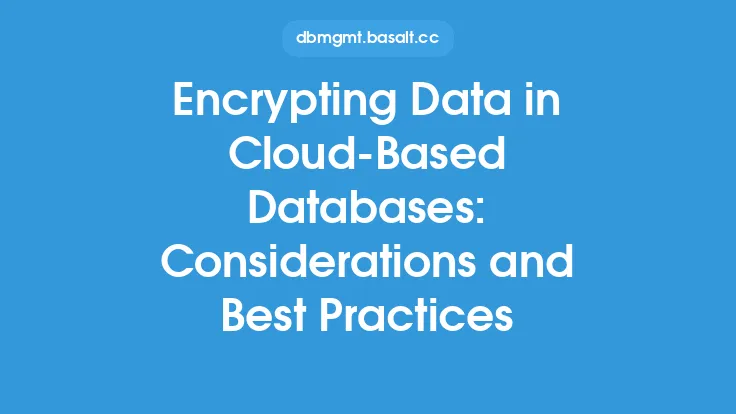Managing read-only databases is a crucial aspect of data denormalization, as it ensures that data remains consistent and accurate across the system. Read-only databases are designed to provide a single source of truth for data, allowing for faster query performance and improved data integrity. However, managing these databases requires careful planning and execution to ensure that they remain effective and efficient.
Introduction to Read-Only Database Management
Read-only databases are designed to be used in a variety of scenarios, including data warehousing, reporting, and analytics. They are typically used to store large amounts of data that are infrequently updated, such as historical data or aggregated data. Managing read-only databases requires a deep understanding of the underlying data structure and the requirements of the system. This includes understanding the data model, the query patterns, and the performance requirements of the system.
Best Practices for Managing Read-Only Databases
There are several best practices for managing read-only databases, including:
- Data Modeling: A well-designed data model is critical to the success of a read-only database. The data model should be optimized for query performance, with a focus on minimizing the number of joins and subqueries.
- Indexing: Indexing is critical to improving query performance in read-only databases. Indexes should be created on columns that are frequently used in queries, such as primary keys and foreign keys.
- Data Partitioning: Data partitioning is a technique used to divide large tables into smaller, more manageable pieces. This can improve query performance and reduce the amount of data that needs to be scanned.
- Query Optimization: Query optimization is critical to improving performance in read-only databases. This includes optimizing queries to minimize the number of joins and subqueries, as well as using efficient query algorithms.
- Data Maintenance: Data maintenance is critical to ensuring the accuracy and consistency of data in read-only databases. This includes performing regular backups, checking for data corruption, and updating statistics.
Data Denormalization Techniques
Data denormalization is a technique used to improve query performance by reducing the number of joins and subqueries. There are several data denormalization techniques that can be used in read-only databases, including:
- Pre-Aggregation: Pre-aggregation involves calculating aggregated values, such as sums and averages, and storing them in a separate table. This can improve query performance by reducing the amount of data that needs to be scanned.
- Pre-Joining: Pre-joining involves joining tables together before storing them in the database. This can improve query performance by reducing the number of joins that need to be performed.
- Data Duplication: Data duplication involves duplicating data to improve query performance. This can be done by storing multiple copies of the same data, or by storing data in a summary table.
Managing Data Consistency
Managing data consistency is critical to ensuring the accuracy and reliability of data in read-only databases. There are several techniques that can be used to manage data consistency, including:
- Data Validation: Data validation involves checking data for errors and inconsistencies before storing it in the database. This can be done using constraints, triggers, and other data validation techniques.
- Data Normalization: Data normalization involves organizing data into a consistent format to improve data integrity. This can be done using techniques such as first normal form, second normal form, and third normal form.
- Data Synchronization: Data synchronization involves synchronizing data across multiple systems to ensure that it remains consistent. This can be done using techniques such as replication, mirroring, and data integration.
Monitoring and Maintenance
Monitoring and maintenance are critical to ensuring the performance and reliability of read-only databases. There are several techniques that can be used to monitor and maintain read-only databases, including:
- Performance Monitoring: Performance monitoring involves tracking the performance of the database to identify bottlenecks and areas for improvement. This can be done using tools such as query analyzers and performance monitors.
- Error Logging: Error logging involves tracking errors and exceptions to identify and resolve issues. This can be done using tools such as error logs and exception handlers.
- Backup and Recovery: Backup and recovery involve creating backups of the database and recovering data in the event of a failure. This can be done using tools such as backup software and recovery tools.
Conclusion
Managing read-only databases is a critical aspect of data denormalization, as it ensures that data remains consistent and accurate across the system. By following best practices such as data modeling, indexing, data partitioning, query optimization, and data maintenance, organizations can improve the performance and reliability of their read-only databases. Additionally, techniques such as data denormalization, data validation, data normalization, and data synchronization can be used to manage data consistency and improve query performance. By monitoring and maintaining read-only databases, organizations can ensure that they remain effective and efficient, and provide a single source of truth for data across the system.
